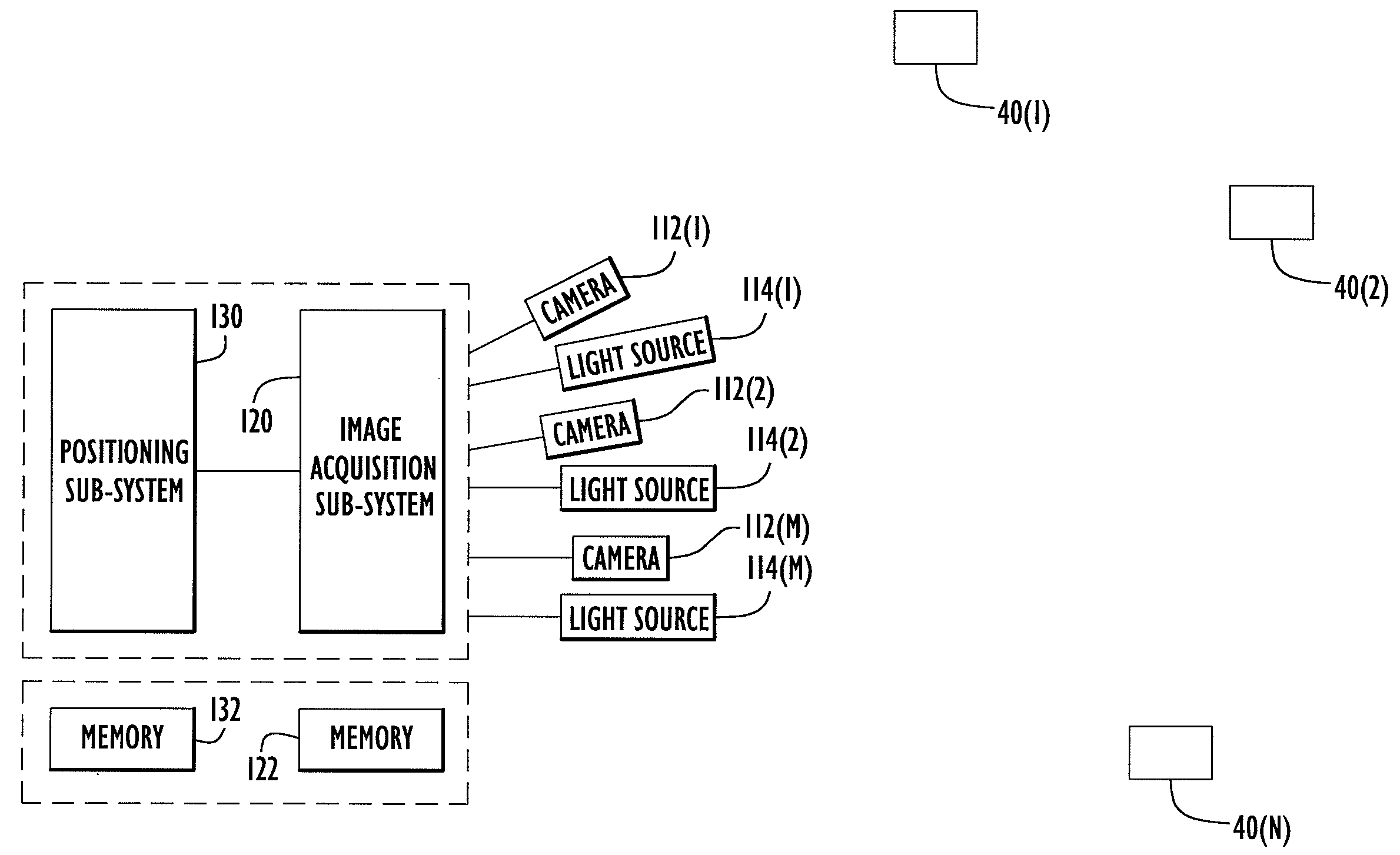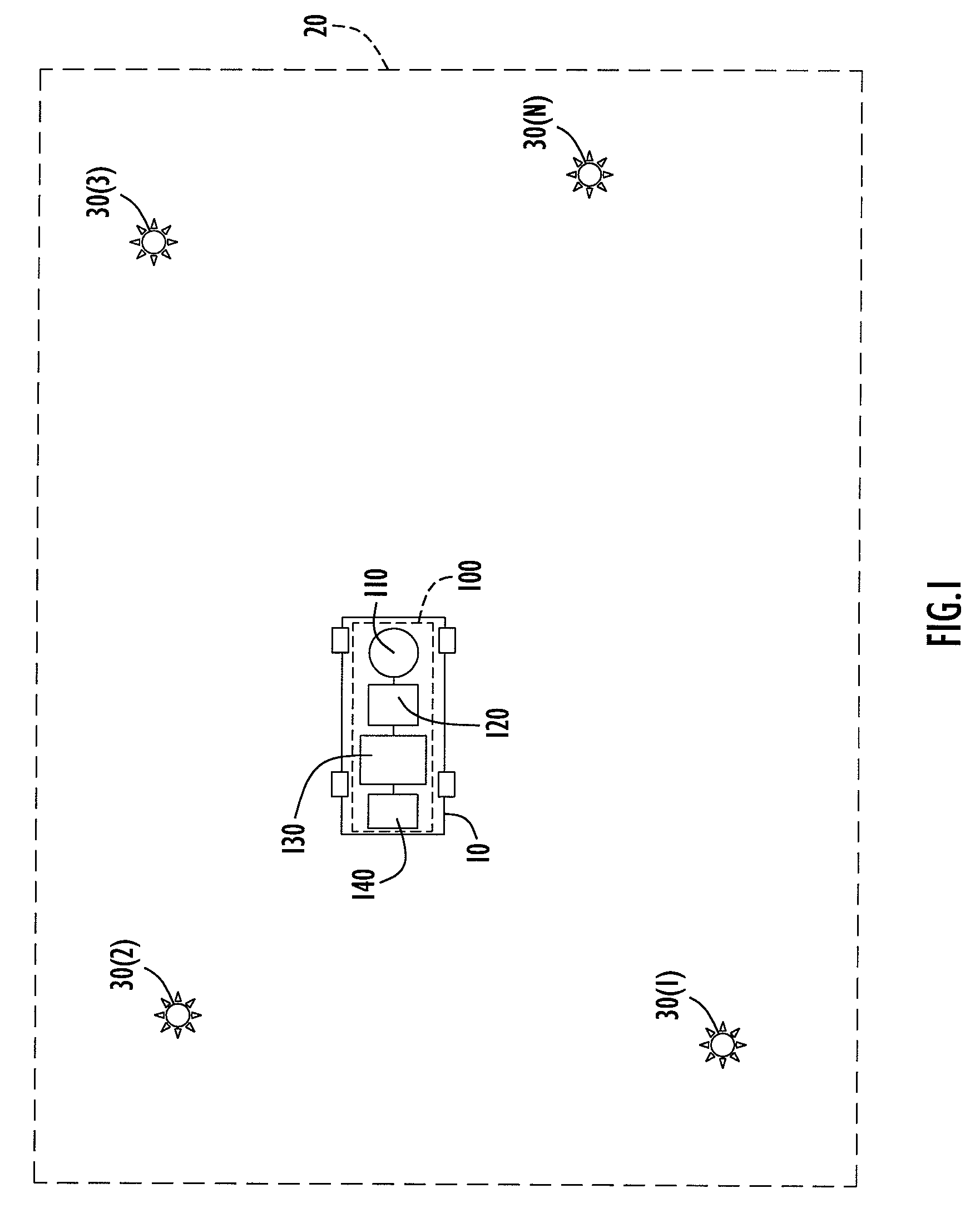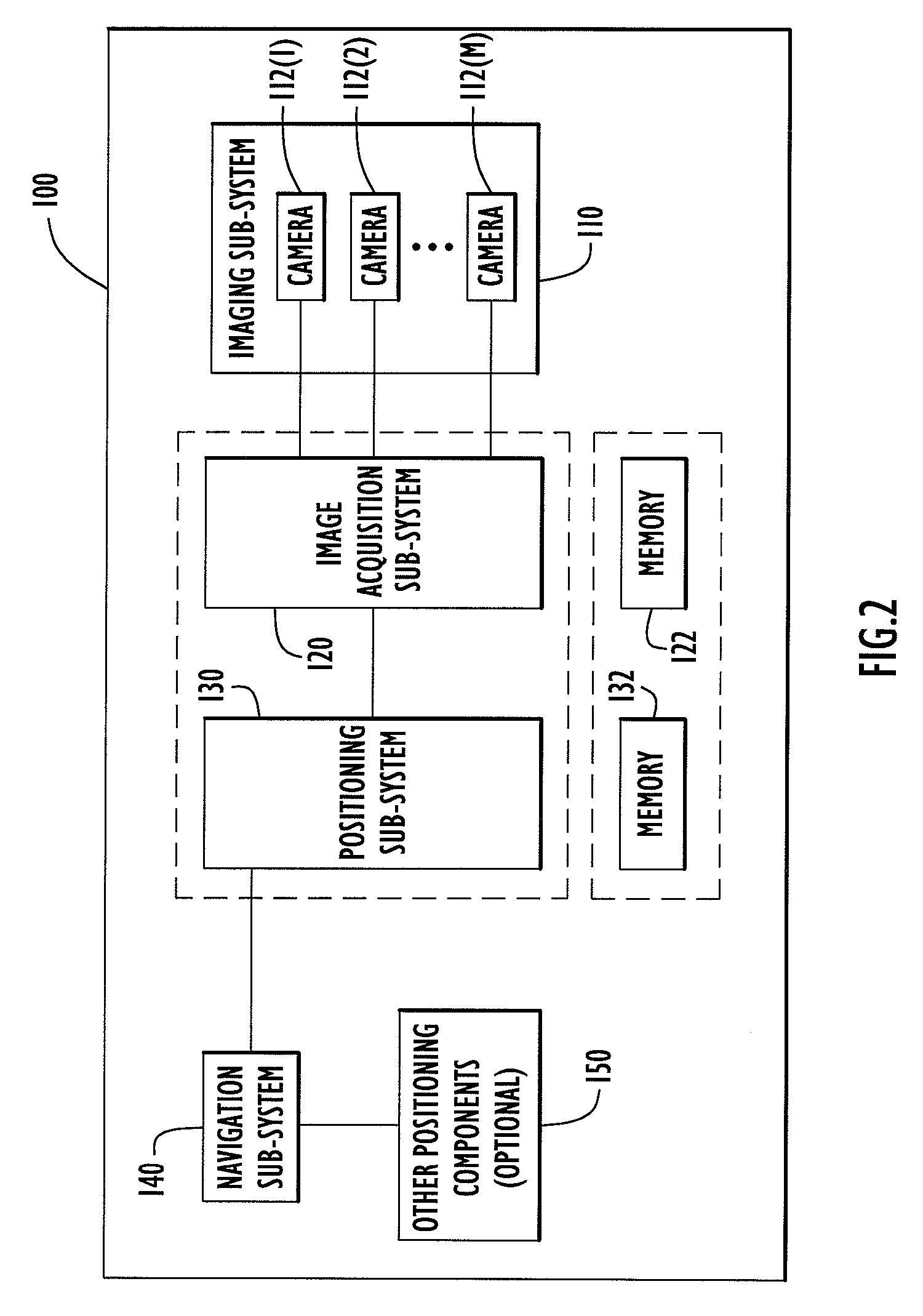Landmark Navigation for Vehicles Using Blinking Optical Beacons
a technology of optical beacons and vehicles, applied in the field of positioning and navigation systems, can solve the problems of ins systems accruing errors as a function of time, unable to achieve precise navigation, and high cost of gps/ins positioning systems, and achieve accurate navigation. , to achieve the effect of auging other positioning systems
- Summary
- Abstract
- Description
- Claims
- Application Information
AI Technical Summary
Problems solved by technology
Method used
Image
Examples
Embodiment Construction
[0019]Referring first to FIG. 1, a vehicle is shown at reference numeral 10 that moves about within a field of operation shown at reference numeral 20. The vehicle may be a robotic self-controlled vehicle, or a remotely controlled vehicle, or any other vehicle on which it is desired to have navigation capabilities. The field of operation 20 may be a room inside a building, an entire building, an outdoor region such as a town or city, etc. Positioned throughout the field of operation 20 are optical beacons 30(1) to 30(N). In one embodiment, the positions or locations of the optical beacons 30(1) to 30(N) are known a priori or otherwise determined prior to deployment of a vehicle 20 in the field of operation. In another embodiment, the vehicle 20 determines the positions of the optical beacons by way of a self-surveying technique described hereinafter. The optical beacons may be positioned on the ceiling of a room or building or on a vertical structure (e.g., wall) for indoor applicat...
PUM
 Login to View More
Login to View More Abstract
Description
Claims
Application Information
 Login to View More
Login to View More - R&D
- Intellectual Property
- Life Sciences
- Materials
- Tech Scout
- Unparalleled Data Quality
- Higher Quality Content
- 60% Fewer Hallucinations
Browse by: Latest US Patents, China's latest patents, Technical Efficacy Thesaurus, Application Domain, Technology Topic, Popular Technical Reports.
© 2025 PatSnap. All rights reserved.Legal|Privacy policy|Modern Slavery Act Transparency Statement|Sitemap|About US| Contact US: help@patsnap.com



